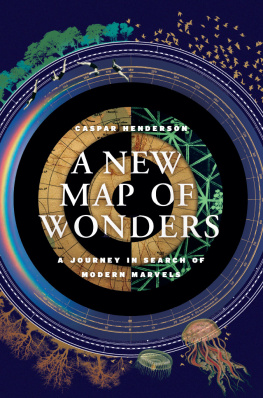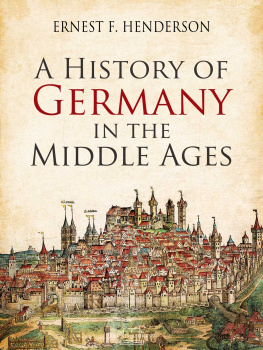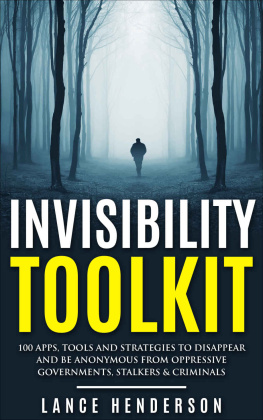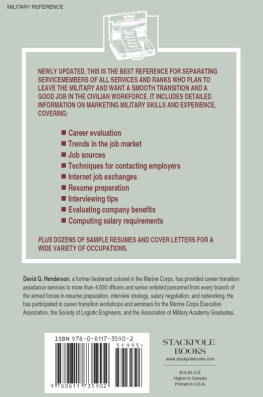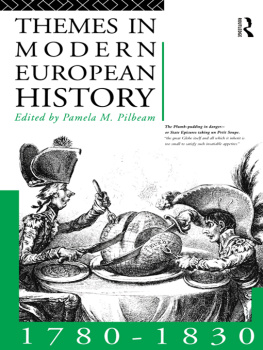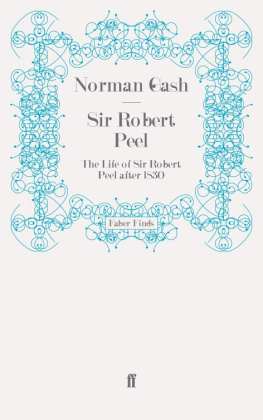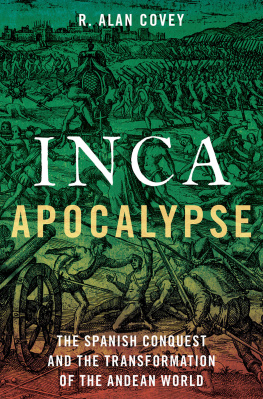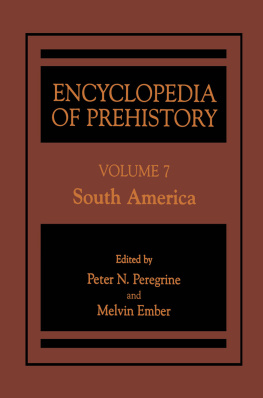The Course of Andean History
The Course of Andean History

PETER V. N. HENDERSON

2013 by the University of New Mexico Press
All rights reserved. Published 2013
Printed in the United States of America
18 17 16 15 14 13 1 2 3 4 5 6
THE LIBRARY OF CONGRESS HAS CATALOGED THE PRINTED EDITION AS FOLLOWS:
Henderson, Peter V. N., 1947
The course of Andean history / Peter V. N. Henderson.
pages cm. (Dilogos series)
Includes bibliographical references and index.
ISBN 978-0-8263-5336-8 (pbk. : alk. paper) ISBN 978-0-8263-5337-5 (electronic)
1. Indians of South AmericaAndes RegionHistory. 2. Indians of South AmericaColonizationAndes Region. 3. Indians of South AmericaAndes RegionSocial life and customs. 4. Social movementsAndes RegionHistory. 5. Social changeAndes RegionHistory. 6. Andes RegionHistory. 7. Andes RegionColonization. 8. Andes RegionSocial life and customs. 9. Andes RegionForeign relationsSpain. 10. SpainForeign relationsAndes Region. 11. SpainColoniesAmericaAdministration. I. Title.
F2229.H46 2013
980dc23
2013004687
For Jackson and Lily
and their parents,
Courtney and Matthew Lewis
Contents

Illustrations

MAPS
FIGURES
Preface and Acknowledgments

EVER SINCE I BEGAN TEACHING ANDEAN HISTORY MORE THAN A DECADE ago, students have requested a comprehensive textbook covering the history of the region chronologically from initial settlement to contemporary times. This volume is a response to that demand. Earlier syntheses of the regions historical evolution are long out of print. During nearly every decade from the 1940s to the 1980s, an eminent historian (Arthur P. Whitaker, Frederick Pike, Magnus Mrner) sought to fill this void, as did a well-known journalist (William Weber Johnson). Each of the four selected a central theme for their book, themes that because of the passage of time no longer seem as relevant for students taking an undergraduate course about the region in the twenty-first century. A more recent volume by a distinguished scholar of Latin American literature (Jason Wilson) is not intended to provide a historical overview of the Andes but instead takes readers on a country-by-country trek through the mountains, excerpting information, including the occasional historical nugget, from the writings of foreign visitors, novelists, and poets. Thus, the absence of a current synthesis of the regions historical development, coupled with the explosion of research on the area since 1970, speaks to the need for a new text suitable for student use. What follows, then, is a chronologically organized yet thematic survey of the basic trends in Andean history that also details the differences in each countrys development.
On the first day of class, I ask students a question, the answer to which leaves the five above authors in disagreement: What countries should be included in the study of the Andean nations? Students quickly rattle off the names of all those nations touched by the enormous mountain chain: Venezuela, Colombia, Ecuador, Peru, Bolivia, Chile, and even Argentina. Viewing the region from outer space, one could observe metaphorically that the Andes look like the spine of South America. If a political map could be superimposed from this vantage point, one would see that for some South American countries the Andes are endogenous while for others they are exogenous, a skeletal backbone external to the core of the nation. Therefore, this text will focus on those four countries (Colombia, Ecuador, Peru, and Bolivia) where the Andes Mountains have played an integral role in shaping their historical development. Venezuela and Chile will only receive occasional attention, and Argentina will be mentioned even less frequently. Further, excluding these latter three nations has additional logic because of their own national focus. Venezuela for the most part looks outward on the Caribbean, while Chile and Argentina are the core nations in the distinctive Southern Cone.
The Andean world fascinates students and travelers today because it offers a spectacular blend of landscapes and peoples. This volume will provide a greater understanding of this diverse region, which is quite different from other parts of Latin America. First and foremost, the book will emphasize the period since the winning of independence in 1825. Yet the regions republican history cannot be explained without a clear understanding of what happened in the pre-Hispanic and colonial eras. The first three chapters explore the complex relationship between the Andean peoples and their land until the fall of the Inka Empire in 1532. The next four chapters study the conquest/encounter and the colonial aftermath, emphasizing the syncretism forced upon the often unwilling original inhabitants of the region. The following seven chapters analyze the long nineteenth century and discuss the attempts of the Andean elite to fashion modern nation-states in the face of many divisive factors, including race. The final six chapters carry the story from 1930 to the present, as the Andean countries have debated different ways to create a more inclusive society as well as prosper economically.
This volume would not have been possible were it not for the work of the many outstanding scholars in several disciplines who, especially since 1970, have labored in the archives and in the field and produced many important scholarly books and articles, as reflected in the list of readings following each chapter. In addition, all of us who study the Andean world should thank the university presses who have remained true to their institutional missions and published our scholarship even when the prospects for profits seemed dim. Because of the necessarily interdisciplinary nature of Andean studies, this text will draw upon the writings of archaeologists, anthropologists, political scientists, and economists as well as scholars of literature and the fine arts whose works have added immeasurably to this work.
Finally, during the time in which I have worked on this text, I have incurred many intellectual debts. First, I would like to thank my undergraduate mentor, J. Len Helguera of Vanderbilt University, who first introduced me to modern Colombian history. At the University of Florida, Michael Moseleys course on Peruvian archaeology provided a foundation for further studies on the pre-Hispanic past. As the beneficiary of an NEH grant on the Andean Worlds, I am most grateful to the faculty who shared their expertise with us: Richard Burger, Tom Cummins, Frank Salomon, Christopher Donnan, Walter Alva, and Rolena Adorno. Kris Lane, now of Tulane University, helped this neophyte navigate Ecuadorian archives and taught me much about that beautiful country during our many conversations. I would like to thank my friends and colleagues at the University of TexasAustin, especially Ann Twinam, Virginia Garrard-Burnett, Seth Garfield, Jorge Caizares-Esguerra, Jonathan Brown, Henry Dietz, Matthew Butler, Michelle Wibbelsman, and Lina del Castillo, who shared their expertise of Latin America with me. I would also like to thank John Sanbrailo of the Pan American Development Foundation, Guillermo Bustos, Fausto Flores, the late Jorge Salvador Lara, and the many other Ecuadorians who taught me so much about their countrys history. Other scholars who shared their current research with me include Gabrielle Kuenzli, Nicola Foote, Erin OConnor, Hayley Froysland, Marc Becker, George Lauderbaugh, and Jason McGraw. Jeff and Eileen Marston and Doug and Nancy Brown offered generous hospitality during my research visits in Washington and Nashville, respectively. Thanks to my mother, Sydney Henderson, who provided an idyllic setting in Cape Neddick, Maine, during several summers to write, and to my sister Anne Finucane and her husband Brendan, who added necessary levity on those occasions. My kind colleagues in the history department at Winona State University have been extremely supportive over the years. I also would like to thank Provost Nancy Jannik and President Judith Ramaley for providing funding that enabled me to collect the illustrations for the text and for encouraging my scholarly efforts. Thanks also are due to my students at UTAustin during the spring semester, 2011, and my students at Winona State who field-tested earlier versions of this text. Their invaluable feedback greatly improved the final version. Finally, thanks especially to Chuck Walker and Lyman Johnson, who provided wonderful suggestions to improve the final version.
Next page

